Have you ever left a restaurant feeling that your experience was truly wonderful? Did you stop to consider all the small details that came together to create that impression? Whether it’s a quick dinner where the enjoyment stems from timely service, or a more relaxed, celebratory meal where you wish for deeper connection, every aspect plays a crucial role in shaping your experience. As designers, we aim to understand these elements to guide our clients and craft spaces that support their vision.
Understanding the Intent
The first step in designing any restaurant space is understanding the project vision. We need to know the “why” behind the investment. What are they trying to achieve? This foundation helps ensure the design team and everyone involved are aligned and working toward a shared goal. Key questions include:
• What is the restaurant’s specialty?
• Do they have a clear forte?
• Is it a standalone restaurant or part of a larger facility, like a resort or a shopping district?
These factors inform decisions related to the restaurant’s accessibility, marketing strategies, and the expectations that diners will have even before sitting down to eat. For example, a restaurant in a shopping district may need to consider attracting foot traffic, while a resort restaurant might focus more on creating an exclusive, relaxing experience for guests. Once diners enter the space, the design should reflect and reinforce the narrative that has been established—through sight, smell, taste, and conversation.
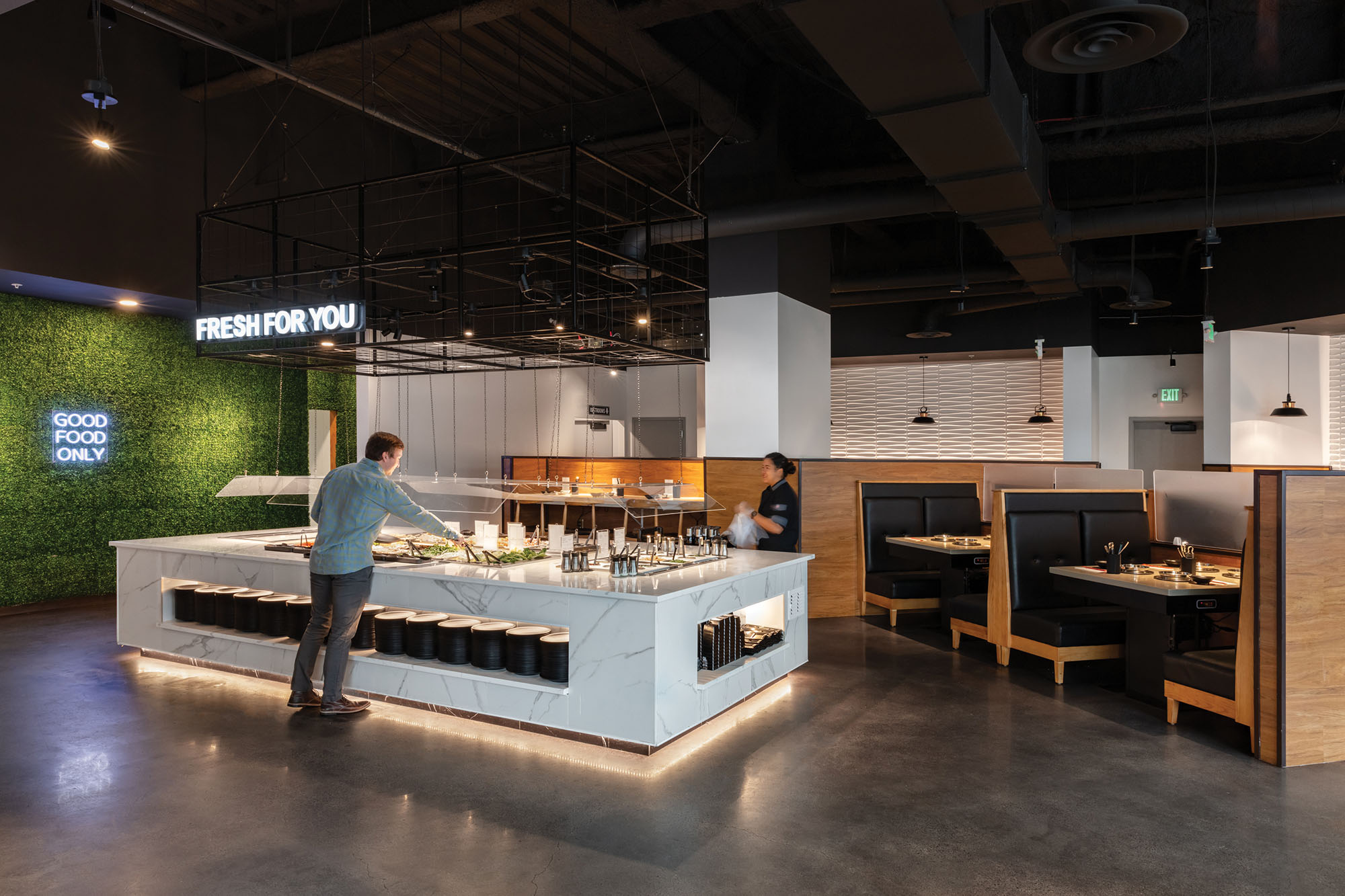
Located on the new “Restaurant Row” on the south end of The Gateway in Salt Lake City, this tenant improvement project created a modern dining experience with fresh and healthy dishes.
Enhancing the Dining Experience
Technology plays an important role in shaping the dining atmosphere. The type of technology used can influence the pace and formality of the experience. For example, some casual restaurants use tablets or kiosks for ordering and payments, making the experience feel fast-paced or rushed. In contrast, higher-end establishments typically opt for more of a personal touch, offering exceptional hospitality with less reliance on technology.
That said, technology can still enhance the dining experience, even in high-end settings. Examples include wireless charging stations built into the bar, with indicator lights to let guests know the option is available. This subtle integration of technology allows restaurants to meet the needs of modern diners while maintaining an intimate, personal atmosphere.
MARRIOTT TEMPE TOWNEPLACE SUITES & FAIRFIELD INN
The natural stone bar includes illuminated built-in charging stations.
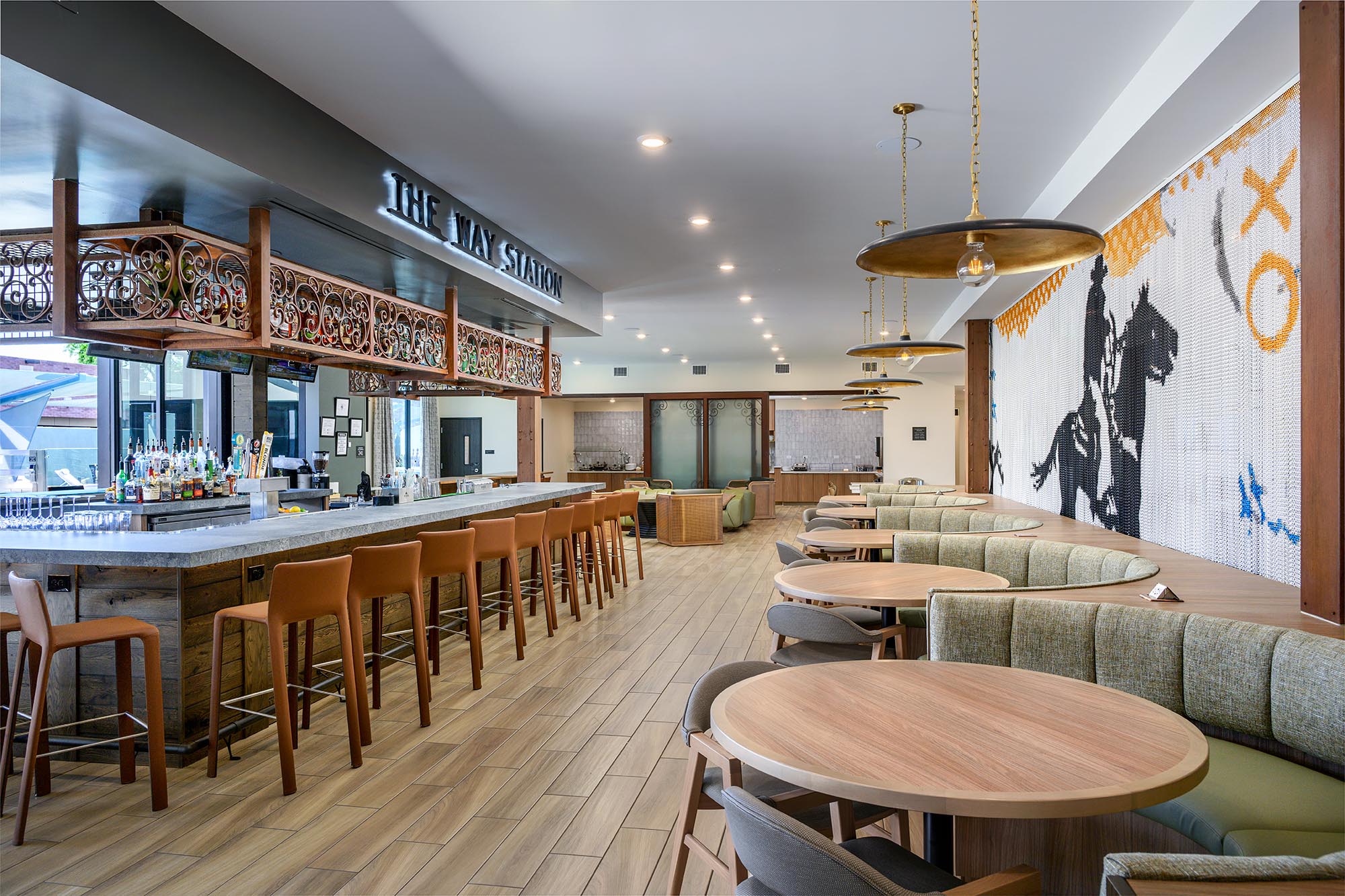
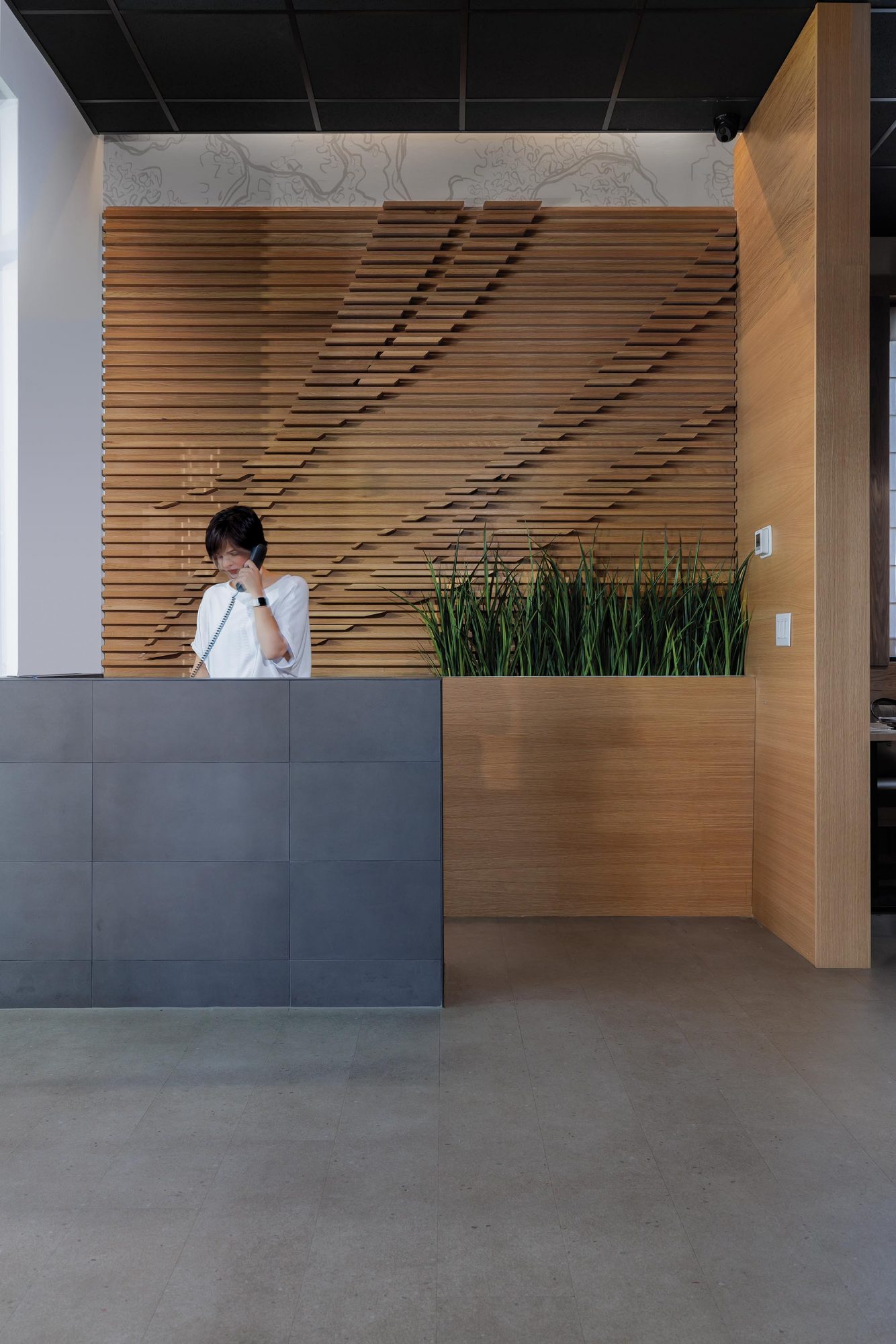
Telling a Story Through Design
Some restaurants focus on niche cuisines or cultural experiences that may not be widely known. These restaurants tend to attract more curious diners who are eager to explore new flavors and experiences. The design of these spaces can help tell a story, incorporating custom artwork or sculptural elements inspired by the culture the restaurant represents. Specially curated artwork or design details can build a narrative, making the space feel unique and engaging. Our Shimogamo project allowed us to incorporate elements that are important to Japanese traditions and architecture. It was essential to make these nods feel intentional through custom commissions while allowing them to fit into the existing context through scale, color, and materials. Origamilike curves inspired the dimensional wood wall that greets you as you enter the restaurant. The use of natural wood, balanced with stone-like finishes, helps define its identity within the Phoenix Metro restaurant scene.
Shimogamo Gilbert features a sushi bar, dining area, and craft cocktail bar. Unique to this location is its offering of Robatayaki fare –fireside cooking– that can be appreciated while sitting at the sushi bar.
Connecting to the Local Landscape
The location of the restaurant is another critical consideration in the design process. With increasing demand for sustainable design practices, it’s important to understand the materials that are readily available in the region and that will perform well in the specific climate, particularly for outdoor spaces. Using local materials creates a deeper connection between the restaurant and its natural surroundings. Whether guests are conscious of it or not, they instinctively connect to their environment, through the context of the location which is influenced by the space’s relationship with daylight and the landscape. A design that acknowledges these elements helps diners feel more at ease in their surroundings.
Embracing What’s Current
Dining trends play a significant role in shaping both the operational and aesthetic aspects of a restaurant’s design. For example, how the staff works, what they serve, and how the space is configured can all contribute to the restaurant’s success.
- Pop-Ups: A pop-up restaurant or short-term dining concept offers an opportunity to dive into current trends that may be fast-evolving. These spaces allow for more flexibility in design, catering to temporary, ever-changing popular trends.
- Instagram-Worthy Design: In today’s social media-driven world, having an “Instagramworthy” spot in the restaurant is often a key factor in attracting customers.
A carefully designed wall or background can make a space feel exciting and shareable, encouraging diners to capture their experience.
It is also important to consider how trends connect to the regional context. For instance, a restaurant in a coastal area might lean into natural, beach-inspired elements, while a downtown restaurant might embrace a more urban, minimalist aesthetic. A good example of this is Cork + Kale.
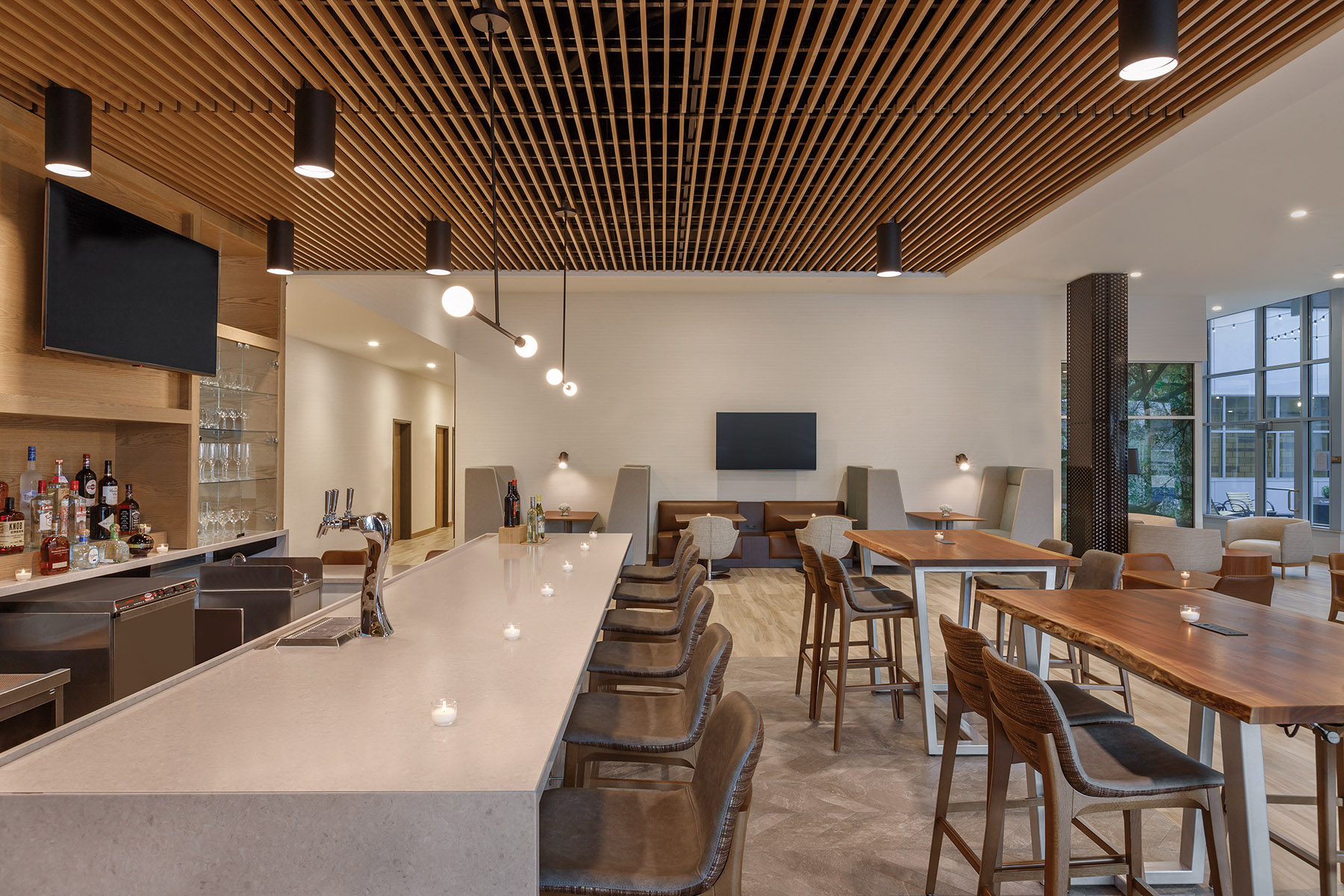
CORK + KALE
Located inside the IHG Rochester Hotel, the menu offers health-conscious options for a demographic centered around health and wellness due to its proximity to the Mayo Clinic.
Shaping the Mood and Experience
The ambiance of a restaurant is shaped by various factors—everything from the layout and lighting to the sounds and overall atmosphere. The tone of the space should align with the type of dining experience the client envisions. Time of Day: A restaurant may have a lively, energetic atmosphere during lunch, but a quieter, more intimate feel in the evening. (Or in contrast, help transport you to a different ambiance than what is around you.) Public vs. Private Spaces: The layout plays a significant role in creating different types of spaces—whether public or private, and how much privacy diners feel. For example, a quick bite might turn into a more extended meal when guests feel they can relax and linger in a comfortable, semi-private space. The goal is to ensure that the space supports the type of experience the restaurant aims to offer. For casual restaurants, this may mean creating a vibrant, social atmosphere. For fine dining, it might mean providing a more tranquil, exclusive environment where guests can savor each course and enjoy intimate conversation.
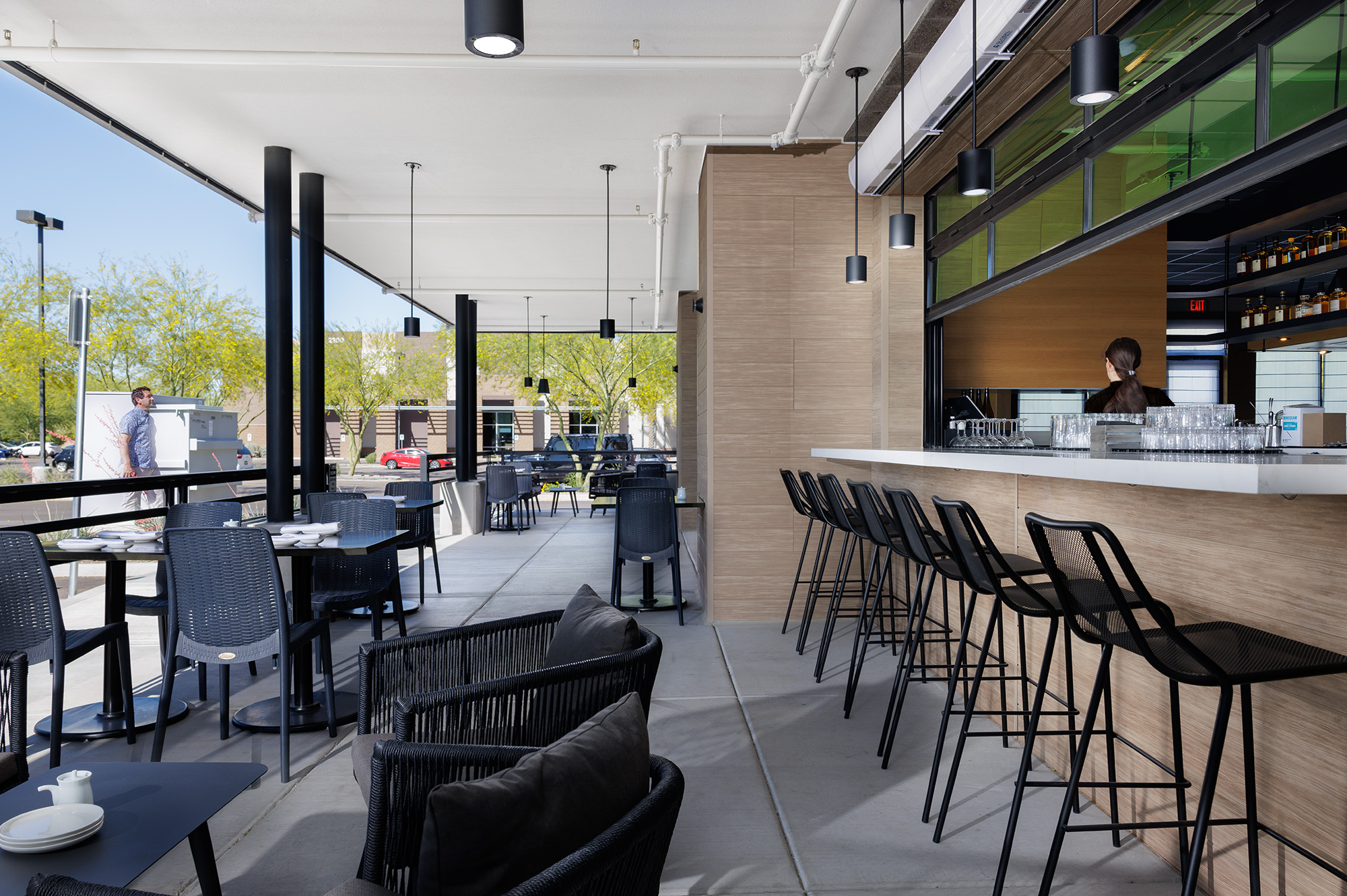
The Power of Design in Creating a Memorable Experience
At FFKR, we understand that thoughtful design directly impacts a restaurant’s success—enhancing the customer experience and the bottom line. Our team is dedicated to creating spaces that reflect your vision and drive operational efficiency and long-term profitability. We collaborate closely to deliver a design that ensures the best outcomes for our clients and guests.

Alma is an Associate and a key team member of our Hospitality Studio. She is based in our Tempe office.
Interested in learning more? Email hospitalitystudio@ffkr.com